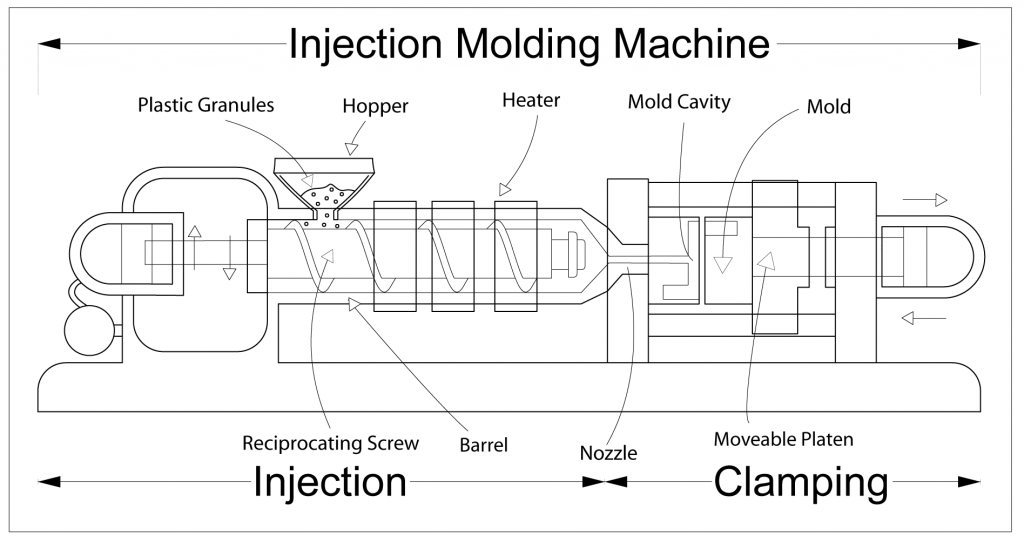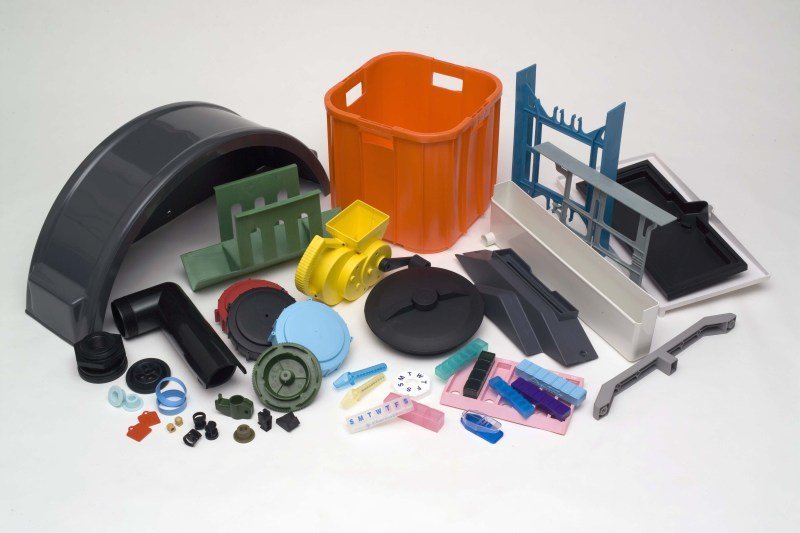Plastic Injection Molding: A Comprehensive Guide to Modern Production Techniques
Plastic Injection Molding: A Comprehensive Guide to Modern Production Techniques
Blog Article
A Comprehensive Guide to the Plastic Shot Molding Innovation
Plastic injection molding stands as a keystone of modern production, supplying unparalleled effectiveness and precision in the production of complex plastic components. This thorough overview checks out the multifaceted process, from the initial melting of raw materials to the elaborate cooling and solidification phases. By discovering the significant advantages this technology gives, along with its diverse applications and arising fads, one may start to appreciate its crucial role fit different markets. As the landscape of producing progresses, understanding the future trajectory of injection molding becomes increasingly essential. What developments exist ahead?

Summary of Plastic Shot Molding
Plastic injection molding is a commonly used manufacturing process that enables the efficient manufacturing of complex plastic parts with high precision. This innovation has become a cornerstone in different sectors, including vehicle, customer items, and electronic devices, owing to its capacity to generate large amounts of parts promptly and cost-effectively.
The procedure entails melting plastic granules and infusing the molten material right into a pre-designed mold. Once cooled down, the mold is eliminated to disclose the ended up component, characterized by its detailed details and uniformity. The versatility of products used in plastic injection molding, ranging from thermoplastics to thermosetting polymers, enables suppliers to customize items to satisfy specific demands, such as flexibility, resistance, and toughness to warmth or chemicals.
In addition, the efficiency of this technique minimizes waste and lessens production prices, making it an eye-catching option for organizations aiming to enhance their manufacturing procedures. As technology advancements, innovations such as multi-material shot molding and the assimilation of automation continue to enhance the capabilities of plastic injection molding, allowing the production of increasingly sophisticated products that satisfy the demands of contemporary markets.
The Shot Molding Process
Injection molding is an innovative production method that involves several critical actions to transform raw plastic materials into completed products. The procedure begins with the prep work of plastic pellets, which are fed into a heated barrel. Here, the pellets are thawed and homogenized to accomplish an uniform thickness.
As soon as properly heated, the liquified plastic is infused right into a specifically crafted mold under high pressure. This action is important, as it permits the product to fill every cavity of the mold, making sure the end product precisely mirrors the designated style. The injection time must be thoroughly regulated to stop problems and make sure efficient product usage.
After the mold and mildew is filled, it undertakes a cooling phase, where the plastic solidifies into its last form. This cooling procedure can vary in duration depending upon the thickness and complexity of the component. When cooled, the mold and mildew opens up, and the ended up item is expelled.
Secret Advantages of This Technology
Among the most significant benefits of shot molding modern technology depends on its capability to generate high volumes of consistent and specific components with marginal waste. This effectiveness stems from the computerized nature of the process, which substantially lowers manual labor and the potential for human mistake. Because of this, producers can achieve a high degree of repeatability in their output, guaranteeing that each component satisfies rigorous top quality criteria.
An additional secret advantage is the flexibility of materials that can be utilized in injection molding. A vast array of thermoplastics and thermosetting polymers can be formed, permitting for customized homes to suit specific applications. Additionally, the innovation supports complex layouts and complicated geometries, which can be testing over at this website to accomplish with various other producing approaches.
The initial investment in molds may be high, yet the long-term cost savings in product waste and labor make shot molding an economically practical option. These advantages solidify injection molding's setting as a recommended manufacturing process across different industries - Plastic Injection Molding.
Applications Throughout Industries

In the clinical area, injection molding is vital for manufacturing high-quality, sterile components, including syringes, surgical instruments, and housings for clinical gadgets. The capacity to keep limited resistances go to this web-site and generate intricate geometries makes it an optimal option for these applications. Furthermore, the packaging industry benefits from shot molding by creating a large range of containers, closures, and dispensers that are both affordable and reliable.
The toy sector depends greatly on injection molding to create vivid, durable, and risk-free items that appeal to kids. The building industry uses injection molding for creating various components, installations, and components that contribute to both capability and design. In general, the wide variety of applications shows the essential role of injection molding innovation ahead of time different industries.
Future Trends in Injection Molding
Welcoming improvements in innovation, the future of injection molding is poised for substantial transformation driven by technologies in products, automation, and sustainable practices. Among the most notable patterns is the advancement of bio-based and recycled polymers, which not just minimize reliance on fossil fuels however additionally decrease ecological impact. As producers progressively focus on environment-friendly remedies, these materials are coming to be extra widespread in manufacturing.
Automation is an additional vital trend shaping the sector. The combination of robotics and expert system into this link the shot molding procedure improves effectiveness, precision, and manufacturing rate. Smart manufacturing facilities equipped with IoT tools permit real-time surveillance and anticipating upkeep, minimizing downtime and optimizing operational processes.
Furthermore, the shift in the direction of customized and small-batch production is obtaining momentum. Advanced innovations such as 3D printing and additive manufacturing allow rapid prototyping and the production of complex geometries that were previously unattainable. This shift permits firms to react better to market needs and consumer preferences.
Conclusion
To conclude, plastic shot molding innovation stands for a keystone of modern-day manufacturing, offering performance and versatility in producing complicated parts throughout varied industries. The detailed exam of the shot molding process highlights its important phases and benefits, while the expedition of applications emphasizes its extensive significance. Arising patterns, consisting of sustainability and automation, suggest an appealing future for this technology. Continued innovations are likely to enhance manufacturing capabilities and ecological considerations, forming the landscape of production.
Plastic injection molding stands as a cornerstone of modern-day manufacturing, supplying unequaled performance and precision in the manufacturing of complicated plastic parts (Plastic Injection Molding). The adaptability of materials made use of in plastic injection molding, varying from thermoplastics to thermosetting polymers, enables makers to tailor products to fulfill specific needs, such as stamina, flexibility, and resistance to warm or chemicals
Injection molding is an advanced production technique that involves a number of crucial steps to transform raw plastic products right into ended up products.The adaptability and performance of injection molding modern technology have led to its extensive fostering across many markets.In conclusion, plastic shot molding technology represents a keystone of contemporary manufacturing, supplying efficiency and adaptability in generating complex components across varied sectors.
Report this page